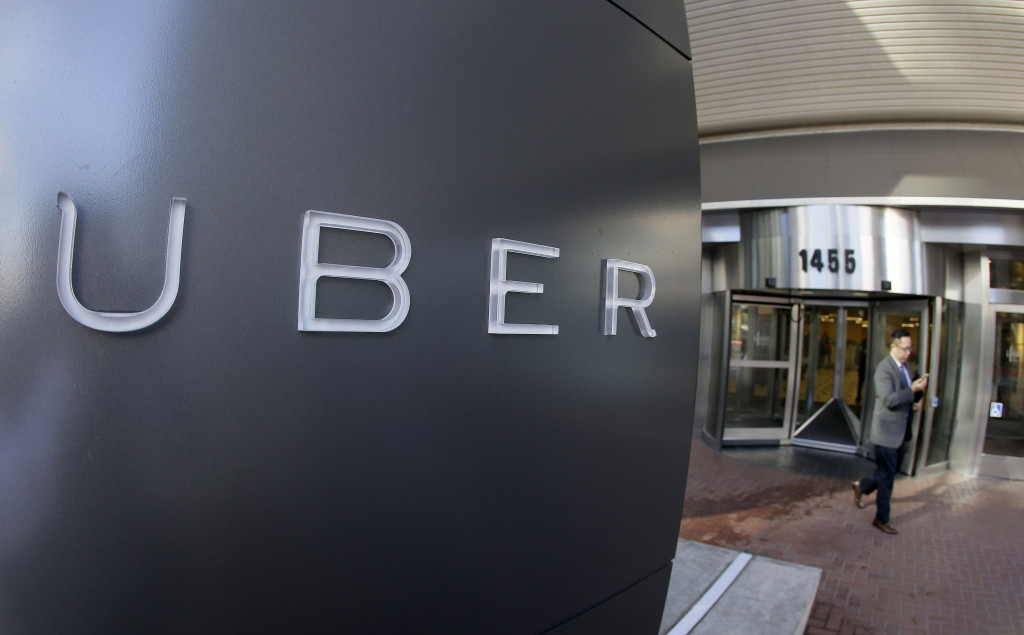
In this Dec. 16, 2014 file photo, a man leaves the headquarters of Uber in San Francisco. (AP Photo)
Uber on Wednesday unveiled a partnership with NASA that will see it develop flying taxis priced competitively with standard Uber journeys.
Uber also announced that Los Angeles will join two other previously revealed “UberAIR” pilot schemes in Dallas Fort-Worth, Texas, and Dubai.
California and Texas are the US states with the largest number of cars.
READ: Uber lays out vision for flying commuter transit
“Uber’s participation in NASA’s UTM (Unmanned Traffic Management) Project will help the company’s goal of starting demonstration flights of uberAIR in select US cities by 2020,” the ride-sharing company said in a statement.
Uber wants to “explore other collaboration opportunities with NASA” with a view to open “a new market of urban air mobility,” it added.
The first demonstration flights are expected in 2020, moving into commercial operations by 2023—in plenty of time for the 2028 Olympic Games in Los Angeles.
The flights will have a pilot during initial flights, but could be automated in the future, spokesman Matthew Wing confirmed to AFP.
An UberAir journey between Los Angeles’ airport and the Staples Center arena, for example, would take 27 minutes—three times less time than the same journey by car.
A promotional video illustrated the app would work in a similar way to the current set-up for ordering a car ride.
But the planned electric vertical take-off and landing vehicles (eVTOLS) “differ from helicopters in that they are orders of magnitude quieter, safer, more affordable, and more environmentally-friendly,” the company said, adding that journeys will be priced competitively with a standard Uber trip.
The vehicles will take off, land and recharge upon a network of “vertiports” installed on top of parking garages, on existing helipads or on unused land around road interchanges.
Deloitte’s Pascal Pincemin said at the Paris Air Show flying taxis will not be commonplace until 2050, as their reliability will need to be established first. /jpv